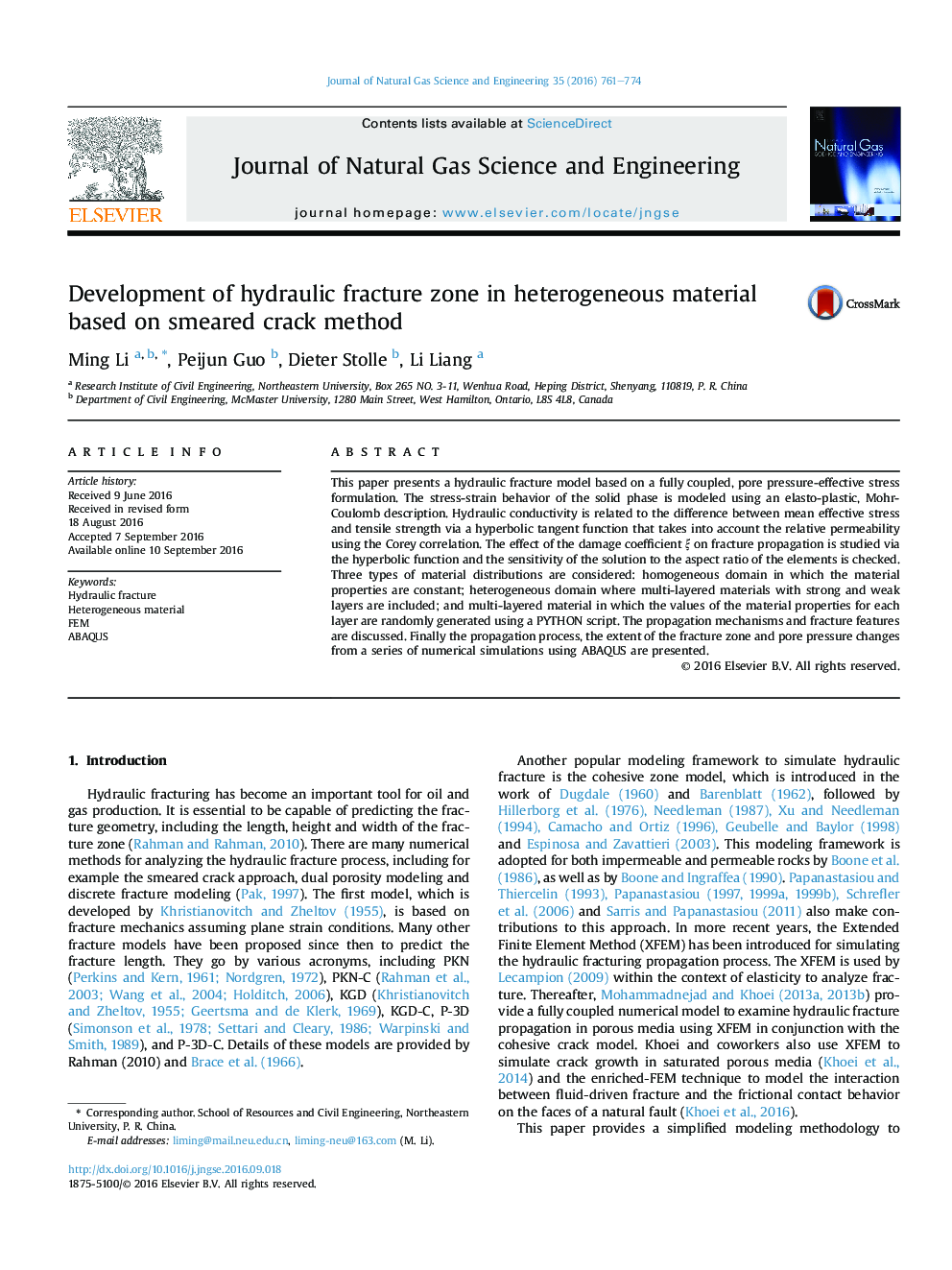| Article ID | Journal | Published Year | Pages | File Type |
|---|---|---|---|---|
| 6481585 | Journal of Natural Gas Science and Engineering | 2016 | 14 Pages |
â¢Modification of K is an effective way to simulate the complex HF problems.â¢The damage parameter ξ dramatically influences the hydraulic conductivity history.â¢The fracture fronts become constrained between the unpenetrable strong layers.â¢The tensile strength has an important impact on the features of the fracture zone.
This paper presents a hydraulic fracture model based on a fully coupled, pore pressure-effective stress formulation. The stress-strain behavior of the solid phase is modeled using an elasto-plastic, Mohr-Coulomb description. Hydraulic conductivity is related to the difference between mean effective stress and tensile strength via a hyperbolic tangent function that takes into account the relative permeability using the Corey correlation. The effect of the damage coefficient ξ on fracture propagation is studied via the hyperbolic function and the sensitivity of the solution to the aspect ratio of the elements is checked. Three types of material distributions are considered: homogeneous domain in which the material properties are constant; heterogeneous domain where multi-layered materials with strong and weak layers are included; and multi-layered material in which the values of the material properties for each layer are randomly generated using a PYTHON script. The propagation mechanisms and fracture features are discussed. Finally the propagation process, the extent of the fracture zone and pore pressure changes from a series of numerical simulations using ABAQUS are presented.
